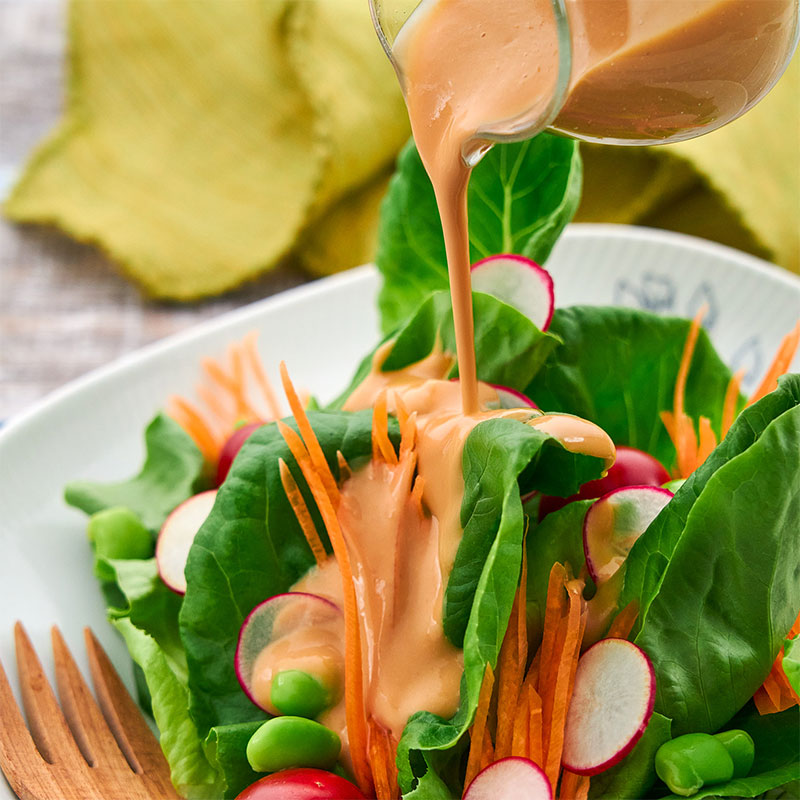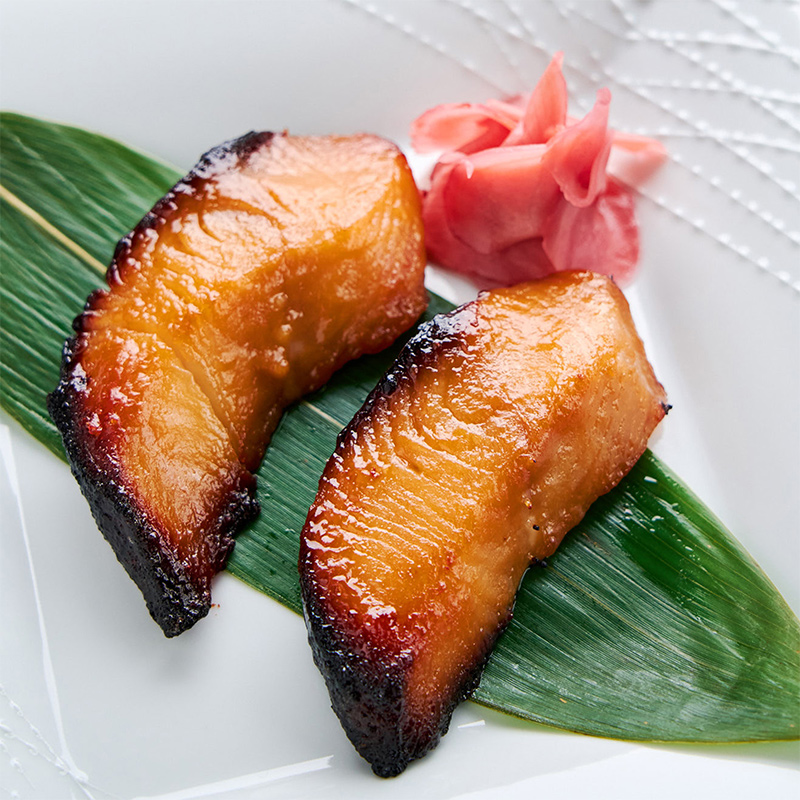Homemade salad dressings are a simple yet transformative way to turn fresh veggies into delicious side dishes, and this Miso Vinaigrette is no exception. With the rich, umami taste of white miso paste emulsified with oil and vinegar, this dressing brings a depth of flavor that’s hard to beat. Paired with fresh ginger, honey, and Dijon mustard, this miso ginger dressing recipe offers the perfect balance of flavors that will add a gourmet touch to your everyday meals. It’s the perfect way to dress your favorite vegetable recipes, so whether you’re looking to elevate a simple salad or add a unique twist to your go-to veggies, this miso ginger vinaigrette will become a staple in your kitchen.
Why This Recipe Works
- Miso naturally contains lecithin, which helps bind the oil and vinegar into a creamy dressing.
- The natural amino acids in miso give this vinaigrette a beautiful umami flavor without adding many ingredients.
- Using an immersion blender quickly emulsifies the miso vinaigrette.
Ingredients for Miso Vinaigrette
- Vegetable Oil – The oil in vinaigrette dressings helps mellow out the vinegar’s sharp acidity while giving the dressing the body it needs to cling to a green salad. Any vegetable oil with a neutral flavor, such as grapeseed, avocado, or canola oil, will work.
- Miso – A fermented soybean paste that adds a rich umami flavor to the dressing, while its natural lecithin content helps emulsify the vinaigrette. This recipe was made using Hikari Organic Miso White; however, other types of miso, such as red or yellow miso, will work.
- Vinegar – The other major component of a vinaigrette dressing is vinegar. Rice vinegar (a.k.a. rice wine vinegar) provides a mild acidity that balances the richness of the oil. Apple cider vinegar or white wine vinegar are good alternatives, and if you don’t mind the color of the dressing becoming darker, balsamic vinegar will work as well.
- Water – The miso vinaigrette is a little too thick for a salad dressing. Water helps loosen it up, so it’s a pourable consistency. You can substitute fruit juice such as pineapple or orange juice for a sweeter dressing.
- Toasted Sesame Oil – Adds a nutty, toasty flavor that complements the earthy miso and adds complexity to the vinaigrette.
- Honey – Balances the salt and acid with a touch of sweetness. Maple syrup or brown sugar are good vegan alternatives.
- Ginger – Fresh ginger adds a zesty kick that brightens up the dressing. If ginger is not your thing, citrus zest such as lemon, lime, or orange zest can be used to add other distinct flavors.
- Dijon Mustard – Helps emulsify the vinaigrette while adding a subtle tang and depth. If you want to give your miso salad dressing a spicy kick, try substituting it with Japanese mustard.
How to Make Miso Vinaigrette
To make the dressing, simply add all of the ingredients to a beaker or a tall container suitable for blending. Use an immersion blender to blend the mixture until it’s fully emulsified and creamy. If you don’t have one, you can do this by whisking the ingredients in a bowl or by adding all of the ingredients to a mason jar and shaking the mixture until the dressing is emulsified.
Variations on Miso Dressing
This easy salad dressing is delicious as is, but by substituting flavorful ingredients, you can create fun variations that will make it one of your favorite vinaigrette recipes.
- Carrot Miso Vinaigrette – Two tablespoons of grated carrot can be added to this miso salad dressing to impart the natural sweetness and color of carrots. Alternatively, you can substitute carrot juice for the water.
- Sesame Miso Vinaigrette – Add a tablespoon of ground toasted sesame seeds or a sesame seed paste (like tahini) to make a nutty sesame miso dressing.
- Orange Miso Vinaigrette – Substitute orange juice for the water and honey, and add the zest of half an orange to make a fragrant citrus miso vinaigrette with a sweet, tangy, and citrusy taste without any added sugar.
- Ginger Miso Dip – If you omit the water from this recipe, the dressing forms a thick dipping sauce. It’s perfect for fresh vegetable sticks, or you can use it as a sandwich spread instead of mayonnaise.
How to Use Miso Ginger Dressing
While a simple salad is the most obvious way to use this dressing, it’s versatile enough to season a variety of foods, from roasted vegetables to an Asian noodle salad. This dressing can be stored in an airtight container in the refrigerator, so it’s a good make-ahead seasoning for bento box side dishes such as a sesame broccoli salad or cucumber salad.
Ingredients
- 1/3 cup vegetable oil
- 3 tablespoons Organic Miso White
- 2 tablespoons rice vinegar
- 2 tablespoons water
- 1 tablespoon toasted sesame oil
- 1 tablespoon honey
- 1 tablespoon grated ginger
- 1 tablespoon Dijon mustard
Instructions
- Add 1/3 cup vegetable oil, 3 tablespoons Organic Miso White, 2 tablespoons rice vinegar, 2 tablespoons water,1 tablespoon toasted sesame oil, 1 tablespoon honey, 1 tablespoon grated ginger, and 1 tablespoon Dijon mustard to a beaker and use an immersion blender to emulsify the miso vinaigrette dressing.










